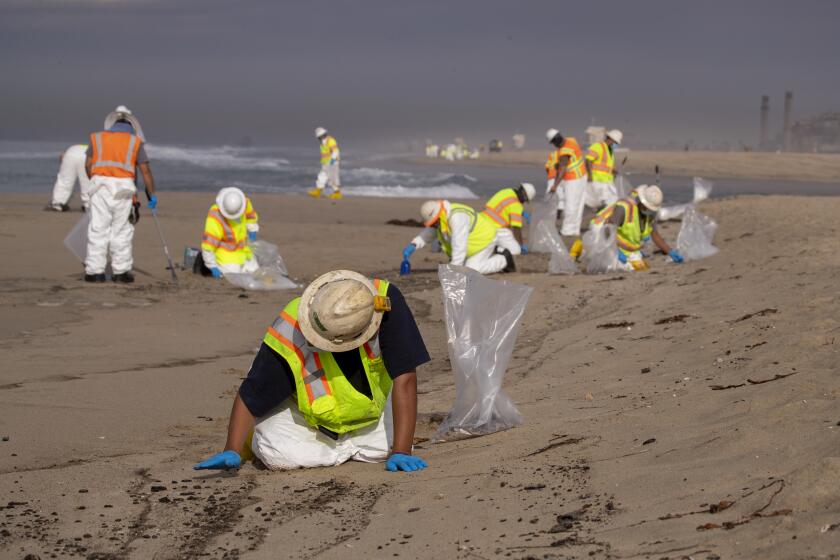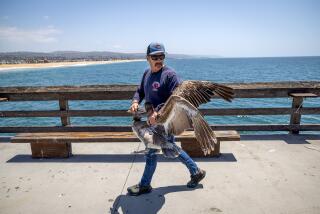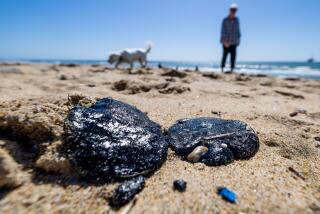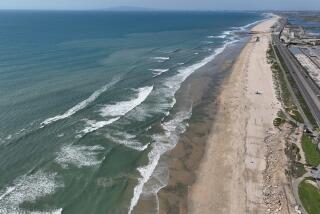Wildlife rescuers fear they are seeing only a fraction of destruction from O.C. oil spill
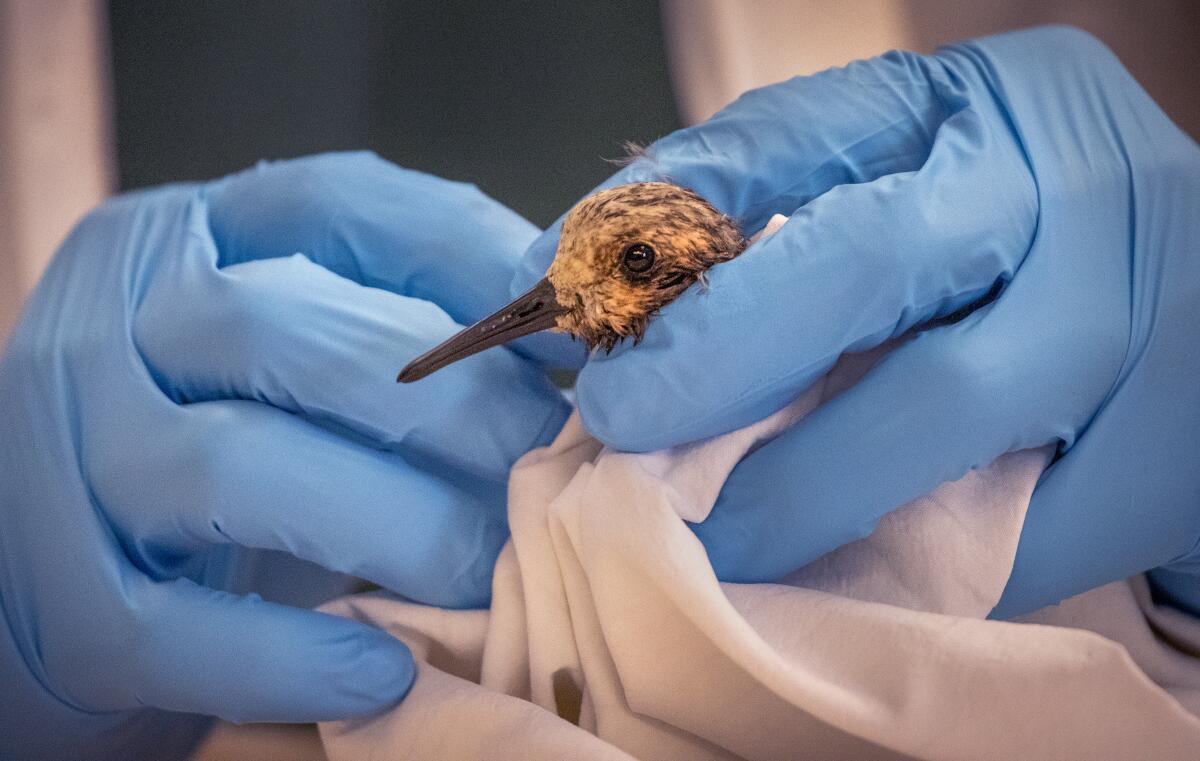
For those fighting to rescue wildlife and sensitive wetlands from the Orange County oil spill, they know there is much they cannot see.
At least 24 oiled birds have been recovered, according to director Michael Ziccardi, director of Oiled Wildlife Care Network. Five of them — including an American coot and a western gull — have died. Three double-crested cormorants have also died, the wildlife group said.
Five of the birds collected Wednesday were snowy plovers, small ground-nesting birds that once populated California in the thousands and are now endangered. Fewer than 1,500 of the birds remain, according to the California Department of Parks and Recreation.
All of the endangered snowy plovers were collected alive. Experts intend to clean them at a care center in San Pedro on Friday.
On Wednesday morning, Lorraine Aguilar stared at the gray-green waves just north of Bolsa Chica State Beach with tears in her eyes.
She was worried about the pod of dolphins she had just seen and whether they would eat fish from the contaminated water. She surfs there several times a week. The parking lot, usually crowded with fellow surfers, was empty.
The first victims are seabirds, graceful creatures that alight upon the ocean’s surface.
“It doesn’t have to be like this,” Aguilar said. “I hope it’s a wake-up call for all of us as we get progressively louder and louder messages from the Earth.”
Elsewhere on the beach, a team of four people from the Coast Guard and other agencies slowly paced the sand, taking notes and snapping pictures.
They were looking for tar balls and hadn’t yet seen any, one man said.
But the absence of visible contamination was little comfort to Aguilar, a former chemical engineer.
“It’s all the stuff we can’t see that scares me,” she said. “This will have impacts for years to come as it works through the food chain.”
Under gloomy skies at Talbert Marsh, the workers used grimy rakes to search for oil stuck against walls and rocks. Pelicans perched nearby, and a trash bin was filled with plastic bags of recovered oil.
John Villa, executive director of Huntington Beach Wetlands Conservancy, said the crews had successfully cleansed oil from the water.
The main focus now, he said, is the rocks lining the 25-acre restored wetlands.
The rain that moved through the region Monday wasn’t a problem, but the upcoming winds are a concern because they could push oil against the rocks. The workers will scrub them with dish detergent, biodegradable materials and steam.
Ziccardi said the number of oil-covered animals that have been collected is lower than he would have expected, given the massive 144,000-gallon spill.
“We’re cautiously optimistic that the numbers will remain low,” he said Thursday. “If this happened during the height of the migration it would be a different story.”
Still, there undoubtedly are more birds and marine animals that have been affected, he said earlier this week.
“There are going to be more animals out there that are affected by this incident than the number of animals we can actually collect.”
Times staff writer Hannah Fry contributed to this report.
More to Read
Sign up for Essential California
The most important California stories and recommendations in your inbox every morning.
You may occasionally receive promotional content from the Los Angeles Times.
